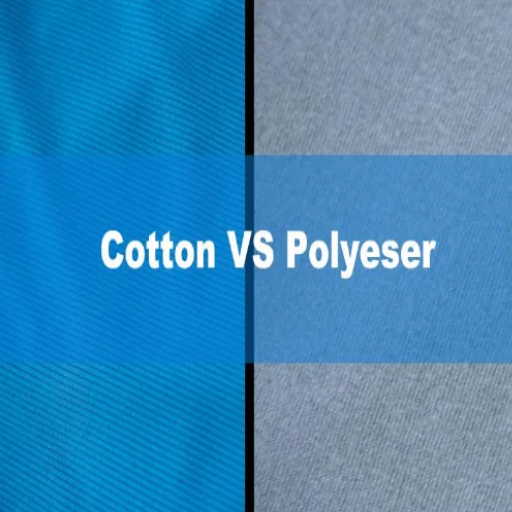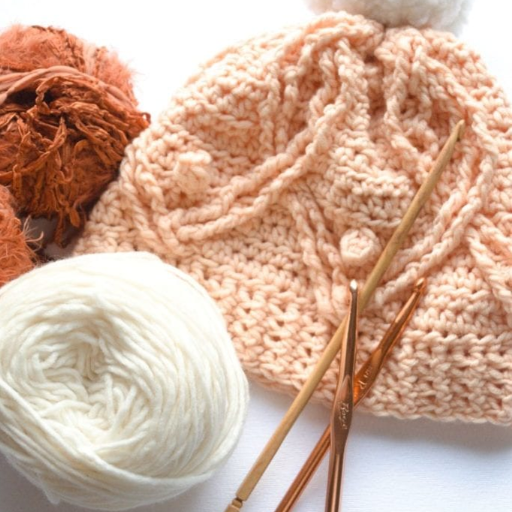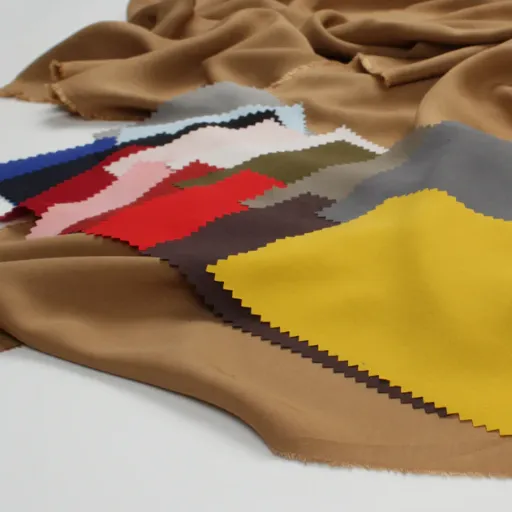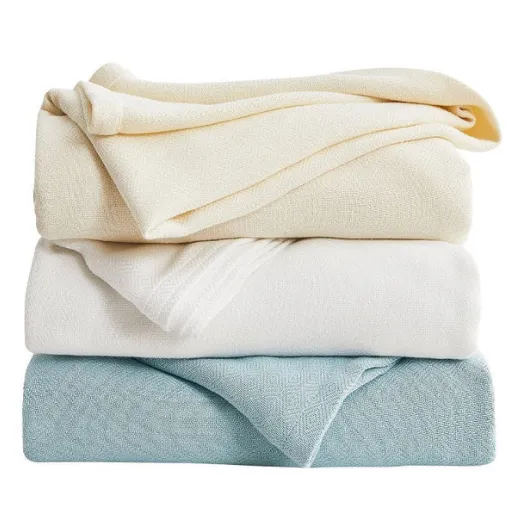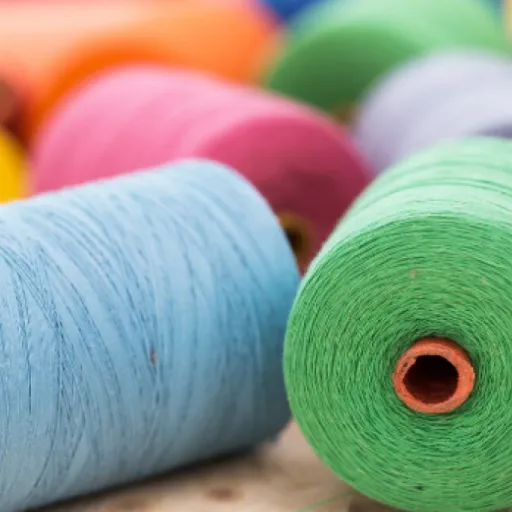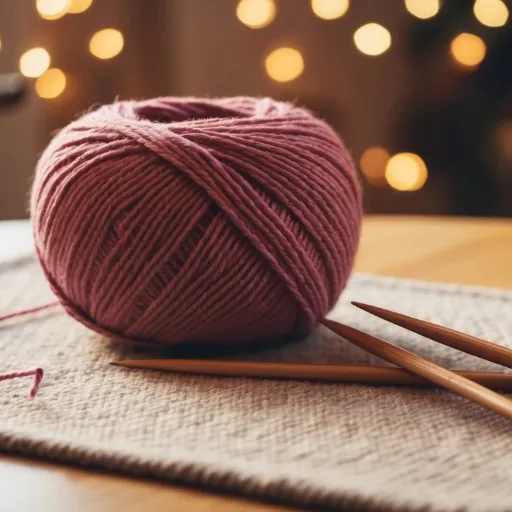Viscose rayon could be considered versatile and highly used across the fiber spectrum. Because of its soft feel, breathability, and cheapness, the fabric has been a major player in several areas such as fashion industries and textiles for the home. However, what does one really do to make viscose ray? An analysis of its manufacturing unveils the mysteries behind the science of the fiber, and consequently, the environmental impact and changing production methods. This article analyzes the inside workings and processes involved in making viscose rayon; thus, with the finer view of how raw materials metamorphose into a fabric immensely valued for its properties. Are you considering the technological factors, sustainability features, or various uses of viscose? This guide delivers an insightful deep dive into all these to quench your curiosity and amplify your knowledge of this interesting material.
Introduction to Viscose and Rayon

Definition and Composition of Viscose Rayon
Viscose rayon is a semi-synthetic fiber created from natural sources such as wood pulp, creating a situation where both processes-natural and industrial-confluence. The foremost ingredient of viscose rayon is cellulose that has been derived from renewable raw materials like bamboo, beech, or pine. This cellulose forms the very basis of viscose as a fine and lightweight material.
Depending on the production process, cellulose is treated with a set of chemicals, usually sodium hydroxide and carbon disulfide, converted into a viscous solution, and spun into fibers. Once solidified, these fibers produce a fabric that emulates silk to some extent in looks and feel while retaining qualities like breathability and absorbency, much like cotton. The uniqueness of this composition renders viscose-rayon favorable in many applications, chiefly textiles.
The viscose process has been in use since the 20th century and has a well-proven record of excellence; however, certain problems are also associated with the manufacturing process in terms of use of chemicals and water-intensive land. Technology-wise, newer and more ecologically friendly methods of production have been realized, such as the closed-loop process that generates very little waste. Knowledge of the advantages and disadvantages of this material is necessary to suggest environmentally conscious usage options for viscose rayon.
History and Development of Viscose Fiber
Key Historical Timeline
- 1891: English chemists Charles Cross, Edward Bevan, and Clayton Beadle developed the viscose process
- 1892: The invention of viscose fiber was copyrighted
- 1910: Industrial scale production began with high-quality fiber manufacturing
- Mid-20th Century: Adoption of new production technologies for efficiency
- Present Day: Focus on ecological concerns and sustainable production methods
The history of filaments dates back to the late 19th century when scientists searched for a cheaper alternative to natural silk. The major breakthrough came in 1891 when the English chemists Charles Cross, Edward Bevan, and Clayton Beadle developed a process in which cellulose could be treated with caustic soda and carbon disulfide to form a viscous solution. The viscous solution was spun into threads that resembled the sheen and texture of natural silk. The invention of viscose fiber was copyrighted in 1892, thereby triggering its commercial potential.
The production of viscose fiber on an industrial scale got underway in the early 20th century. By 1910, manufacturers could produce high-quality fibers via the spinning process, and viscose thereby became a fabric readily available at popular prices. Based on his qualities, such as breathability and good draping, it was accepted on a large scale into areas like apparel and home textiles. Adoption of new production technology from the mid to late 20th century eased efficient manufacture and consistence of raw materials and encouraged the acceptance of viscose into a widely used textile.
To the present day, viscose remains widely in use but has faced scrutiny because of ecological concerns arising from its method of production. Contemporary improvements, including closed-loop manufacturing techniques, have been proposed as solutions-all aiming to capture, recycle and reuse the chemicals, lowering water consumption, and limiting waste among others. Thus, this trajectory going from technological modifications to sustainability considerations tells the evolving story of viscose fiber-a journey from cutting-edge innovation to aid in environmentally biased end-uses.
Types of Rayon and Their Applications
Rayon is a very versatile fiber which can be divided into three main groups based on its production process and properties: viscose rayon, modal, and lyocell. Each type serves distinct applications, having partial handicaps that make rayon favorable for a very wide array of industries with different functionalities.
| Rayon Type | Key Properties | Primary Applications |
|---|---|---|
| Viscose Rayon | Soft texture, silk-like feel, excellent drape qualities, vibrant color absorption | Dresses, blouses, linings, curtains, upholstery, bed linens |
| Modal | Stronger than viscose, soft, durable, shrink-resistant, retains softness after washing | Lingerie, sportswear, bedding, combination fabrics |
| Lyocell | Eco-friendly production, smooth feel, excellent moisture absorption, biodegradable | Sportswear, denim, eco-friendly fashion, sustainable textiles |
Key Takeaway
When put together, these rays stand for the array of possibilities that the fiber can offer in several applications depending on flexibility, utility value, feel, and sustainability on its part.
The Manufacturing Process of Viscose Rayon
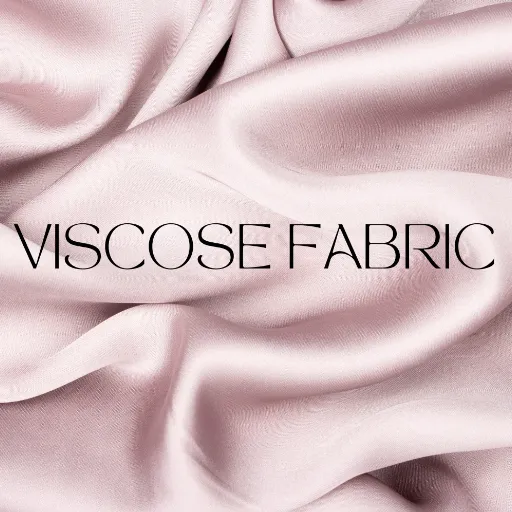
Raw Material Selection: Cellulose Source
Cellulose is derived from viscose rayon; usually, it comes from wood pulp, with possible alternative plant origin. Good raw materials are trees that are fast-growing and renewable, for example, bamboo, spruce, or beech. These are chosen because they have high cellulose content and will regenerate quite fast and thus are considered a sustainable method for fiber production.
Common Cellulose Sources
- Bamboo – Fast-growing and renewable
- Beech – High cellulose content
- Pine – Abundant and sustainable
- Spruce – Quality cellulose fibers
Processing Steps
- Chemical treatment to purify cellulose
- Separation from lignin and wood constituents
- Quality enhancement for consistency
- Preparation for viscose creation
The wood pulp is chemically treated to purify the cellulose, separating it from lignin and other wood constituents. Following this step, the manufacturing of rayon employs the purified raw material. In this manner, manufacturers ensure through various enhancements that a very consistent and high-quality cellulose base is used as the starting point from which the viscose is created.
Sustainability contributes to the choice of cellulose sources. Responsible forestry practices and certifications ensure the raw materials are harvested with respect to the environment and social matters. This approach is taken to ensure the safe minimal impact possible on nature, thereby supporting the growing demand for sustainable production of textiles.
Dissolving Cellulose: Key Techniques
Dissolving cellulose is an immediate step toward the production of viscose and other cellulose materials. It starts with the preparation of the cellulose, usually from wood pulp or other plant fibers, so that it is at the requisite level of purity and quality. Cellulose is treated to eliminate impurities and to produce a state amenable for dissolution.
Traditional Dissolution Process
- Preparation: Cellulose is prepared from wood pulp or plant fibers to required purity levels
- Alkaline Treatment: Sodium hydroxide (NaOH) is applied as the primary solvent
- Chemical Addition: Carbon disulfide is added to assist in conversion
- Formation: Creates cellulose xanthate dissolved in solution
- Control: Temperature and time parameters are strictly monitored
When a cellulose solution is made, one of the key activities involved is putting a solvent into action in which the cellulose is made viscous. These solvents are usually alkaline ones, sodium hydroxide being the chief among them, and may also include reagents such as carbon disulphide to assist in the change. This procedure produces cellulose xanthate dissolved in solution for conversion into textile fibers. Parameters such as temperature and time must be very strictly controlled so as to ensure the maximum possible yield of the dissolved cellulose and the optimum quality of the end product.
Modern Sustainable Approaches
Another approach being discovered is that of clean solvents, such as ionic liquids. A greater emphasis is put on reduction in the use of potentially hazardous chemicals through such newer techniques and on sustainability considerations. By giving importance to methods that are safe and environmentally benign, the industry is on its way to a responsible and green approach for cellulose dissolution.
Spinning Process: From Solution to Fiber
The spinning process converts dissolved cellulose into fibers through controlled stages. First, a solution of cellulose-a.k.a. spinning dope-is prepared and filtered to maintain uniformity and to remove all the dust particles, in order to obtain the best quality fiber and to avoid clogging of the spinneret. A spinneret is the smallest device possible with very fine holes in it through which a solution is extruded.
Spinning Process Steps
Solution filtered to maintain uniformity and remove particles
Solution passed through spinneret with fine holes
Filaments solidified in coagulation bath
Washing, drying, and stretching for final properties
The filtered solution passes through the spinneret into a coagulation bath, where solid filaments of cellulose are regenerated. The solvent is removed by a chemical or physical mechanism from the solution to allow solidification of cellulose transformed from solution to solid. The coagulation bath details in the sense of composition, temperature, concentration, etc., dominate qualities of the final fibers like strength, homogeneity, and texture.
Finally, the changed fibers undergo some optional post-processing, which may include washing, drying, and stretching, with the intent of removing residual solvents and improving the fibers’ mechanical properties, such as durability and elasticity. So, by fine-tuning every step in the spinning process, manufacturers start making fully consistent and high-grade cellulose fibers acceptable for all kinds of applications, from textiles to industrial uses.
Quality Control in Viscose Production
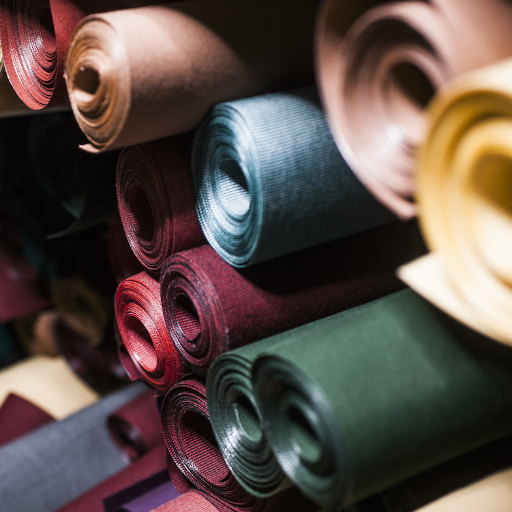
Testing Fiber Quality: Standards and Methods
In Fibre Testing for viscose production, standardized procedures and reliable methods must be followed to ensure that the end product meets all required specifications. Important parameters assessed include tensile strength, elasticity, moisture content, and uniformity of the fibre. These parameters are utilized differently depending on the application in which the fibres find use. In the laboratory, testing is often carried out employing standardized techniques as prescribed under ISO or ASTM to ensure consistency of the tester’s results and also to comply with international industrial standards.
| Test Parameter | Purpose | Standards |
|---|---|---|
| Tensile Strength | Measures force required until fiber breaks, indicates durability | ISO/ASTM standards |
| Elasticity | Tests fiber’s ability to return to original position after stretching | ISO/ASTM standards |
| Moisture Content | Affects mechanical properties, crucial for quality control | Environmental testing protocols |
| Uniformity | Surface assessment under magnification for defects | Visual inspection standards |
Physical testing stands as a must for quality assurance in the case of fibers. Tensile strength tests greatly contribute to checking about the force imposed on the fiber until it yields, which is basically about durability. On the other hand, elasticity tests check what the fiber could do in returning to its aligned or unstretched position once it has been stretched, especially when applying them to works involving flexibility. Surface uniformity can be assessed under different magnifications, which might also reveal any defects and irregularities on the surface that may bring about performance issues.
During quality testing, environmental factors are taken into consideration. For instance, since mechanical properties can be affected by excessive moisture or lack of it, fibers are subjected to moisture content testing. Testing procedures may also entail biodegrading testing and evaluating compatibility with different dyes and chemicals, depending on the end use of the viscose fiber. Rigorous testing procedures implemented for product inspection ensure their sustainability and efficiency in manufacturing.
Impact of Fiber Quality on Fabric Performance
The state of fiber quality determines fabric performance. The better the fiber quality, the stronger the fabric will be, and it will be the basic structure for being breathable as well as comfortable in varied applications. Fiber length, strength, and elasticity are major factors affecting the fiber’s ability to be stressed, stretched, and relaxed with resignation to the fabric form through time period. Thus, smooth and strong fabrics caused by longer and uniform fibers are suitable for highly used clothes.
Quality Impact Areas
- Durability: High tensile strength prevents easy breaking
- Comfort: Good moisture absorption for breathability
- Appearance: Uniform fibers enable better dye absorption
- Longevity: Quality fibers maintain appearance over time
Performance Consequences
- Poor Quality: Uneven dyeing, pilling, coarseness
- High Quality: Brighter colors, smoother texture
- Applications: Quality determines end-use suitability
- Value: Quality directly affects market value
Another very important issue related to fabric quality is the resistance against wearing out. Fibers of high tensile strength would not break easily during production or during use, thus making the fabric more resistant. Such fiber absorption or wicking away moisture would otherwise increase comfort, which is particularly important for sportswear or for warm conditions. These properties derive directly from the fiber properties used.
Finally, fiber quality determines the look and finish of a fabric; dyes absorb better in high-quality fibers, producing brighter and longer-lasting colors. Inferior fiber quality, however, can dye the fabric unevenly, cause pilling, or confer coarseness on it, thereby reducing its value. When manufacturers ensure that fabrics are made with the finest fibers, they are capable of producing fabrics that not only fulfill all functional requirements but maintain their appearance for longer periods.
Regenerating Cellulose: Innovations in Quality Improvement
Regenerating cellulose is a process by which natural cellulose issue, generally of wood pulp or cotton origin, is converted into fibers suitable for fabric-making. This regenerated cellulose is used to manufacture products like viscose, lyocell, and modal, all valued for their softness, breathability, and utility. Innovations in the field thus concentrate on improving fiber and to make them sustainable with a minimal impact on the environment.
Key Innovations in Cellulose Regeneration
🔄 Closed-Loop Systems
Recycling solvents and water, reducing waste and chemical discharge, especially in lyocell production
🧬 Enzyme Treatments
Eco-friendly cellulose processing without harsh chemicals, improving fiber quality naturally
💪 Enhanced Durability
Better resistance to pilling, improved color retention, and increased stretch properties
One major innovation is the application of closed-loop production systems, especially with lyocell-type fabrics. Such systems manage to recycle almost all solvents and water applied during the processing stages, thereby diminishing wastes and chemical discharge. The other advance in enzyme treatments has allowed for eco-friendly means to attack cellulose, improving the fiber quality without using harsh chemicals.
Another major area of regeneration development deals with improving the inherent strength and durability of regenerated cellulose fibres. Modern methods make regenerated fibers more resistant to pilling, retain colors better, and offer more stretch. These improvements add to the functionality of a fabric and enhance its lifespan-putting it up for more ergonomic use by consumers and eco-conscious producers alike.
Environmental Considerations in Viscose Manufacturing
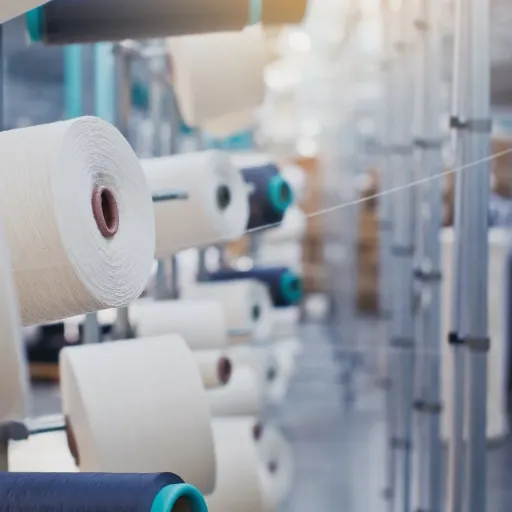
Resource Usage: Water and Energy in Production
The production process of viscose consumes much water and energy, which has been a concern in nature from an environmental standpoint. Water finds use in the processing of wood pulp as well as in the chemical treatment processes that transform it into regenerated cellulose fibers. And, much energy is required, having mostly necessitated non-renewable energy-sources, which further accentuates environmental issues.
⚠️ Environmental Challenges
Used in wood pulp processing and chemical treatments
Reliance on non-renewable energy sources
Large-scale operations amplify environmental impact
The Industry strives to devise new means by which to reduce water and energy consumption. Closed-loop-type operations allow for the recycling and reduction of water use while energy-efficient machinery is in the process of being developed. The reduction in the use of these resources and overall production costs also minimizes environmental harm, which promotes a more sustainable approach in the industry.
However, given the large investments required for new technologies and infrastructure, environmentally sustainable methods continue to pose challenges. Sustainable methods should be promoted through greater industry collaboration and stricter regulation to counter the resource-intensive nature of viscose production. Confronting such economic and environmental concerns standpoint is crucial to ushering toward any form of sustainable textile industry.
Waste Management Practices in Rayon Production
The proper waste disposal procedures need to be set for the rayon production so as to prevent possible environmental degradations and promote sustainability. Rayon production causes considerable amounts of waste byproducts-waste by-products include dissolve wood pulp, some heavy metals, chemicals, and wastewater. Companies can use advanced technology and strong legal measures in waste handling. For example, the treatment of wastewaters using filtration and purification systems all but eliminate contaminants before environmental discharge.
| Waste Type | Management Method | Environmental Benefit |
|---|---|---|
| Wastewater | Filtration and purification systems | Eliminates contaminants before discharge |
| Chemicals (NaOH, CS2) | Recovery and recycling through closed-loop systems | Reduces hazardous waste release |
| Wood Pulp Residue | Processing and recycling for alternative uses | Minimizes organic waste disposal |
| Heavy Metals | Specialized treatment and containment | Prevents soil and water contamination |
Another essential practice includes the recovery and recycling of chemicals used in production processes, including caustic soda and carbon disulfide. If discharged untreated into the environment, they pose a menace to life forms and human health. Through the application of closed-loop systems, these substances can be captured and reused, thereby significantly curbing their release into the environment. The adoption of such technologies drastically cuts down on the generation of hazardous wastes and could save money in the long run.
Best Practices in Waste Management
- Regular Audits: Consistent monitoring and transparent waste reporting
- Environmental Certifications: Following laws and supporting sustainable practices
- Industry Partnerships: Collaboration with environmental agencies and research institutions
- Innovation Focus: Spurring development of waste reduction methods
Waste disposal also concerns itself with following environmental laws and certifications to support sustainable practices. Division employees are regularly audited, cantankerous and transparent with waste reports, and generally encourage a responsible approach to the problem. Partnerships with environmental agencies and a few selected research institutions can also spur innovation in methods of waste reduction, thus aiding in a cleaner and sustainable textile industry. Through innovation, regulation and collaboration, rayon production can indeed be made far less environmentally damaging.
Impact on Ecosystems and Sustainable Practices
The dark shadow of rayon production falls on nature mostly through deforestation, which takes place when cellulose is extracted from timber. Harvesting raw materials on an industrial scale sometimes results in the displacement of habitats and eventually threatens biodiversity. This stands to disrupt ecological balance. Forest loss translates into the loss of carbon sinks, whereas carbon sinks absorb carbon dioxide, thereby lessening greenhouse gas buildup in the atmosphere. From these environmental challenges, the rayon industry must look into sustainability.
🌍 Environmental Impact Chain
Industrial cellulose extraction
Biodiversity threats
Reduced CO2 absorption
Greenhouse gas buildup
Sustainable practices lessen the impact that rayons have on the environment during their manufacture. One of the most important things is sourcing cellulose from forests that are responsibly managed or from alternate sources, such as recycled textiles or agricultural waste. The sourcing for such raw materials may be certified to ensure that they are harvested in a sustainable manner. Production gives pollution into the environment; the chiefs discussed methods that consist of close-loop production of using chemicals in order to very much limit pollution.
🌱 Sustainable Solutions
Responsible Sourcing
- Certified forest management
- Recycled textile materials
- Agricultural waste utilization
Production Innovation
- Closed-loop chemical systems
- Pollution reduction methods
- Energy efficiency improvements
Industry Collaboration
- Conservation partnerships
- Research institution cooperation
- Regulatory compliance
Industry collaboration and regulation are also important in nurturing ecosystems and sustaining life. Working with conservation groups and research institutions, producers can come up with new approaches to lessen the environmental impact. With strong regulatory mechanisms in place, the companies would be held accountable and thus further encouraged to invest in clean technology and greener methods. These are ways through which rayon production can be implemented unto the protection of nature and into sustainable development.
Future Innovations in Viscose and Rayon Production
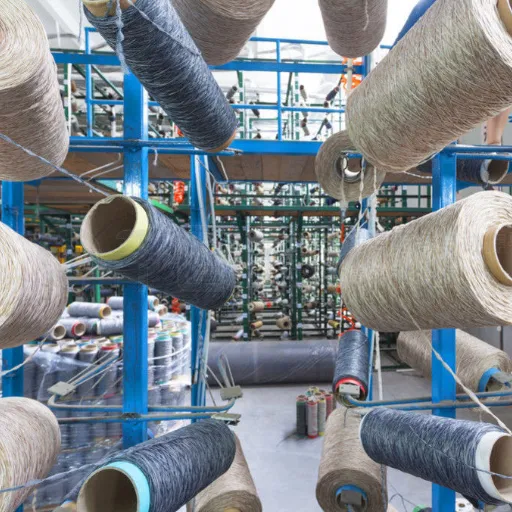
Technological Advancements in Fiber Manufacturing
The fiber manufacturing sector’s future is largely oriented around the integration of sustainable and efficient technologies. Development of closed-loop production systems is one technological advancement in this domain; these systems recycle chemicals and water during manufacturing, thus reducing waste incidences and providing a huge carbon footprint advantage. Hence closed-loop technology benefits the producer from economic efficiency as well as environmental sustainability viewpoints.
🚀 Future Technology Trends
🔄 Closed-Loop Systems
Recycling chemicals and water, reducing waste and carbon footprint for economic and environmental benefits
🧬 Bio-Based Alternatives
Enzymes and microbial processes replacing synthetic chemicals for biodegradable fiber production
🤖 Digital Automation
AI-powered monitoring systems ensuring fiber homogeneity while reducing energy consumption
The next innovational direction covers the field of using bio-based and biodegradable alternatives for traditional chemical processes. Researchers are looking at enzymes and microbial means of replacing synthetic chemicals used in the making of viscose and rayon. These biological routes keep down emissions while simultaneously ensuring greater biodegradability of the fibres, thereby falling in line with enhanced consumer- and regulatory-agency demand for green products.
Finally, another way developments in digital and automation technologies are changing fiber manufacturing. Automated monitoring systems and AI can help improve production accuracy, thus assuring fiber homogeneity all while using less energy and creating less waste. It also allows adjustments to be made during manufacturing, eliminating wasteful steps and creating a more sustainable production cycle. These innovations, taken together, underline the great importance of technology in shaping the greener and more sustainable future of fiber production.
Potential of Polyester and Viscose Blends
Polyester and viscose blends hold immense opportunity within the textile field, given their complimentary properties. Polyester is cherished for its strength, resistance to wrinkles, and retention of shape, whereas viscose gives softness, breathability, and a natural feel almost akin to cotton. The blending of the two results in the integration of both sets of traits, thus giving a fabric with varied usage from fashion to home textiles wherein comfort meets utility.
| Fiber Type | Key Properties | Contribution to Blend |
|---|---|---|
| Polyester | Strength, wrinkle resistance, shape retention, durability | Longevity, structural integrity, easy care |
| Viscose | Softness, breathability, natural feel, drape | Comfort, moisture management, luxurious texture |
| Blended Result | Combined benefits of both fibers | Versatile fabric for multiple applications |
The very thought about the equilibrium of treating various technical or consumer requirements makes one sharper in his observation of various fabric blends for apparel and an array of analytic properties. Polyester contributes to longer-lasting wear and strength: hence, blending it gives a chance for mixing qualities into fabrics, which in use would engage a lot from wear point: activewear or workwear. In contrast, viscose yields a lightweight, soft texture to ensure a garment’s comfort and breathability, especially on hot and sultry days.The function-conscious with comfortable polyester-viscose blend is vastly favored across the globe.
♻️ Sustainability Potential
Another critical aspect of these blends is their sustainability potential. By optimizing the proportion of each fiber, manufacturers can create textiles that are not only high-performing but also resource-efficient. Technological advancements in recycling polyester and sourcing eco-friendly viscose have further strengthened the case for these blends as a sustainable option. With a growing focus on circular fashion and responsible manufacturing, polyester and viscose blends represent a versatile solution aligned with both consumer demands and environmental goals.
Meeting Modern Demands: Sustainability Efforts
More and more, textile sustainability is molded by consumer demands for environmental friendliness. The modern-day consumer puts on materials and blends that keep away from waste and conserve resources during their very manufacture and disposal. In a polyester and viscose blend, one can entrust all the qualities of durability and versatility while also incorporating recycled or environmentally sourced constituents. In other words, high-quality textiles can be produced while remaining useful and meeting sustainability standards.
🌍 Sustainability Innovation Areas
♻️ Advanced Recycling
Technologies enabling extensive reuse of polyester fibers, reducing virgin material dependence
🌳 Green Sourcing
Certified sustainable forestry and reduced deforestation through responsible viscose sourcing
🔄 Circular Design
Products designed for easy recycling, biodegradation, and reuse through take-back programs
By allowing for the extensive reuse of polyester fibers, these key innovations, such as advanced recycling technologies, truly aim at decreasing the dependence on virgin materials. Similarly, sourcing green viscose from forest lands that possess certificates of sustainability work to lower deforestation rates and carbon emissions. These trends showcase how the industry is shifting to reduce ecological footprints while still fulfilling the functional and aesthetic demands of today’s clothing and textile products.
An important step in designing sustainability corresponding to circular fashion is structured. This entails products being manufactured to allow fibers to be reused upon disposal or to be recycled or biodegraded easily. By using recyclable materials and bringing in take-back programs, the manufacturers encourage sustainable consumer patterns. These initiatives reinforce consumer expectations as well as commitment toward ecosystem conservation, setting the example that the industry is capable of innovating responsibly to meet today’s challenges.
Frequently Asked Questions (FAQ)
Q: What is the viscose production process?
A: The viscose production process entails a number of major stages beginning with steeping cellulose in an alkali and producing alkali cellulose. This cellulose is then treated with carbon disulphide to yield a viscose solution, which is ripened to improve its properties. The ripened viscose solution is extruded through a spinneret to form rayon filaments, on which stretching and processing are conducted, resulting in the final viscose fabric.
Q: How is viscose made from cellulose?
A: The making of viscose from cellulose involves a usual treatment of the cellulose with chemicals. In the very first step, the cellulose is steeped in sodium hydroxide, resulting in alkali cellulose. This is then treated with carbon disulphide to create a viscose solution. The viscose is then aged, or ripened, and thereby ready for being spun into rayon fibers.
Q: What are the main raw materials used in viscose production?
A: Principal raw materials involved in the viscose production process are cellulose, sodium hydroxide, and carbon disulphide. These are the materials needed to prepare the viscose solution later spun into rayon filament.
Q: Can you describe the xanthation process in viscose production?
A: Xanthation involves the treatment of alkali cellulose with carbon disulphide to form sodium cellulose xanthate, which dissolves in a dilute alkali solution to give a viscose solution, a very important material for the production of rayon fiber. This particular step contributes a lot in achieving the quality of the final viscose rayon.
Q: What kind of effect does aging have on viscose production?
A: Aging is extremely important, as it provides for the ripening of the viscose, thereby improving its viscosity and quality. If the viscose is sufficiently ripened, it will spin well, thus eliminating many defects of the rayon filament that would otherwise come during the spinning process.
Q: How do rayon manufacturers ensure the quality of viscose rayon?
A: The rayon manufacturers pass a committee inspection on the viscose rubber production during the stages of steeping, xanthation, ripening, and to prepare the viscose solution by filtering unwanted impurities that would eventually make defects in their final products, rayon fabric, accepted by trade.
Q: What are some common defects in rayon filaments?
A: In the spinning process, defects are common to rayon filaments. Perhaps uneven viscosity, improper ripening, or contamination of the viscose solution interferes with the spinning process and causes defects in rayon. These defects shall be minimized by proper control measures employed by manufacturers.
Q: What are the differences between viscose rayon and other types of rayon?
A: The viscose rayon is obtained by the classical viscose processing, while the other types of rayon, such as cuprammonium rayon and nitrocellulose rayon, are obtained through various chemical treatments and solvents. Hence, each variety is distinguished by different properties and uses for textile application.
Q: How has the production of rayon evolved over time?
A: Thus much more is known about rayon production than was before its inception, and new methods are constantly being discovered along with better technology and chemicals. The viscose production process was one of the first processes to be developed; however, others, such as lyocell, have since developed and are becoming more popular as methods of rayon manufacture.
Q: Where is viscose rayon commonly used?
A: It is viscose rayon commonly used in manufacturing clothes, home textiles, and so on. Due to its soft texture and superb versatility, it makes for an excellent choice for apparel, upholstery, and fabrics blended with other fibers like cotton or polyester.
References
- How is Viscose Made? – APRayon – An article explaining the origins and production process of viscose, derived from cellulose.
- What is Viscose Fabric? Exploring How It’s Made – Dalston Mill Fabrics – A detailed overview of the manufacturing process, including the use of wood pulp and chemicals.
- Viscose – an overview – ScienceDirect – A scientific explanation of the viscose production process, including cellulose aging and solubilization.
- What is Viscose Rayon Fabric and How is it Made? – Textile Yarn – Insights into the chemical and natural sources involved in viscose production.
- Material Guide: What is Viscose and Is It Sustainable? – Good On You – A guide discussing the production process and sustainability aspects of viscose.












